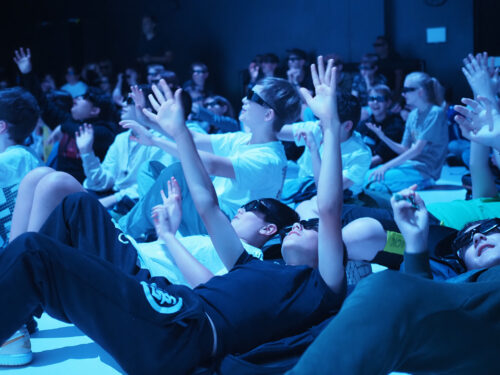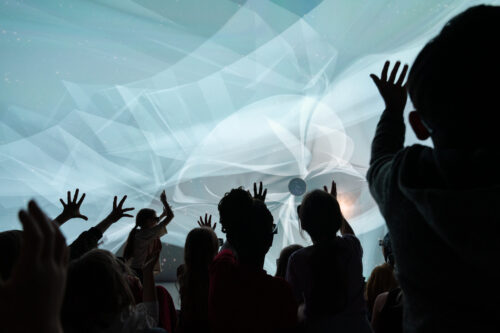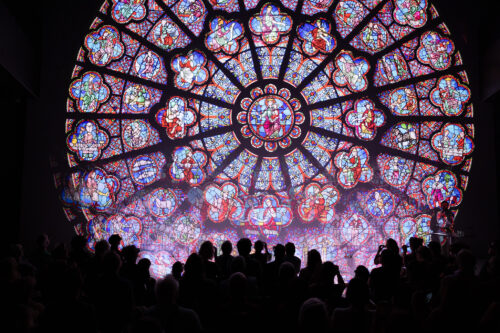
Presentation
-

Deep Space Family Lite 15:30
Families enjoy fun, games, and action in the newly equipped seminar room on the first basement level of the Ars Electronica Center. Exciting stories and immersive experiences in impressive image quality and brilliant colors—only without floor projection—await you here, covering the topics of media art, science, technology, interaction, and action.
-

Deep Space Family Lite 12:30
Families enjoy fun, games, and action in the newly equipped seminar room on the first basement level of the Ars Electronica Center. Exciting stories and immersive experiences in impressive image quality and brilliant colors—only without floor projection—await you here, covering the topics of media art, science, technology, interaction, and action.
-

Deep Space Family Lite 11:30
Families enjoy fun, games, and action in the newly equipped seminar room on the first basement level of the Ars Electronica Center. Exciting stories and immersive experiences in impressive image quality and brilliant colors—only without floor projection—await you here, covering the topics of media art, science, technology, interaction, and action.
-

Deep Space Selection Lite 15:00
Enjoy our 3D image worlds in all their glory in the newly equipped seminar room on the first basement level of the Ars Electronica Center. Here you can expect exciting stories and immersive experiences in impressive image quality and brilliant colors—only without floor projection—from the fields of media art, science, technology, interaction, and action.
-

Deep Space Selection Lite (EN)
Enjoy our 3D image worlds in all their glory in the newly equipped seminar room on the first basement level of the Ars Electronica Center – on this date in English. Expect exciting stories and immersive experiences in impressive image quality and brilliant colors without floor projection from the fields of media art, science, technology,…
-

Deep Space Selection Lite 14:00
Enjoy our 3D image worlds in all their glory in the newly equipped seminar room on the first basement level of the Ars Electronica Center. Here you can expect exciting stories and immersive experiences in impressive image quality and brilliant colors—only without floor projection—from the fields of media art, science, technology, interaction, and action.
-

Deep Space Selection Lite 13:00
You can also enjoy our 3D image worlds in all their glory in the newly equipped seminar room on the first basement level of the Ars Electronica Center. Here you can expect exciting stories and immersive experiences in impressive image quality and brilliant colors (without floor projection) from the fields of media art, science, technology,…
-

Kaiserschild Art Defined: Pieter Claesz Still Lifes
As part of the Kaiserschild Art Defined project, the foundation uses digital technologies to preserve art, present it in a contemporary way, and make it accessible. On Heritage Day, the Kaiserschild Foundation will present still lifes by Pieter Claesz in Deep Space 8K.
-

Deep Space Experience: Notre Dame – Icon of Gothic Architecture in Virtual Light
On the occasion of its grand reopening after the devastating fire in 2019, Notre-Dame de Paris Cathedral shines in Deep Space 8K as an immersive 3D experience. In cooperation with French start-ups Iconem and Histovery, Ars Electronica Futurelab is bringing the iconic building to Linz in virtual form.
-

Deep Space Selection Lite 11:00
Enjoy our 3D image worlds in all their glory in the newly equipped seminar room on the first basement level of the Ars Electronica Center. Here you can expect exciting stories and immersive experiences in impressive image quality and brilliant colors (without floor projection) from the fields of media art, science, technology, interaction, and action.